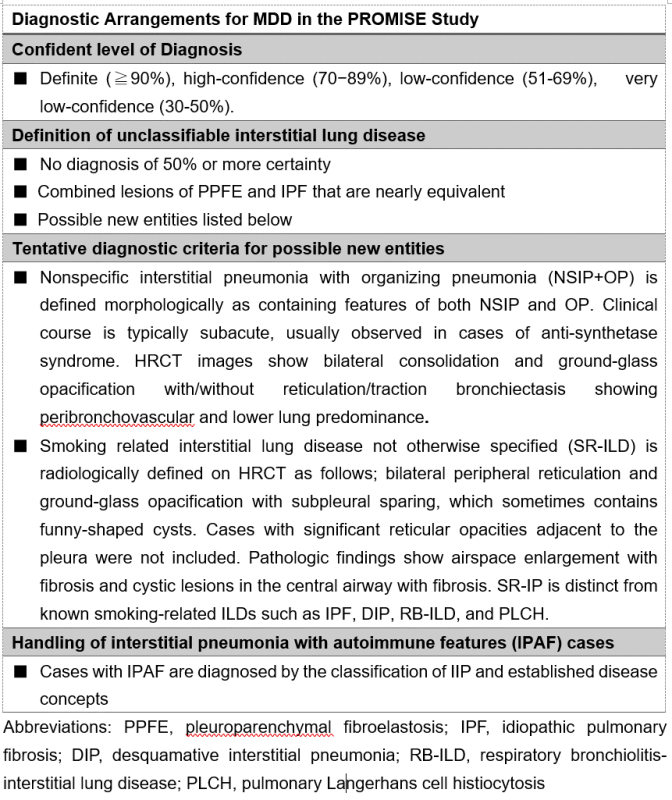Abstract
[Background]
Patients with all types of newly diagnosed ILD at referral respiratory hospitals in Japan were recruited for this prospective nationwide interstitial lung disease (ILD) registry. Rapid central multidisciplinary discussion (MDD) diagnoses with treatment recommendations was then provided through an online MDD platform. Because diagnostic concordance is not always good even among experts, mainly due to the ambiguity of the criteria for unclassifiable ILD, new diagnostic criteria were established for the registry to enhance the accuracy of the diagnoses.
[Diagnostic Criteria Arrangement]
Depending on the level of confidence, diagnoses are divided into definite, high, low. Very low-confidence is defined to provide a diagnostic name in differential diagnoses and to indicate its probability. If there is no diagnosis of 50% or more certainty, a diagnosis of unclassifiable is made. If more than one disease is thought to be present, the diagnosis should be that of the predominant disease. In cases of equivalence, a diagnosis of unclassifiable may be made. In the registry, tentative diagnostic criteria are used for NSIP+OP and SR-ILD (smoking related ILD not otherwise specified) as possible new disease entities.

[Conclusions]
This arrangement of diagnostic criteria will improve diagnostic concordance, clarify the reasons for and breakdown of unclassifiable ILD, and allow evaluation of possible new entities.